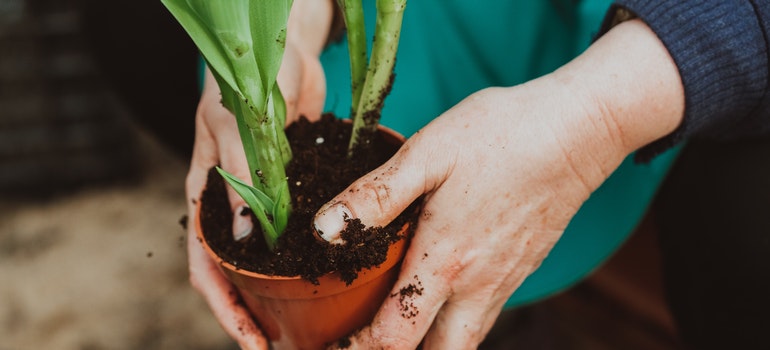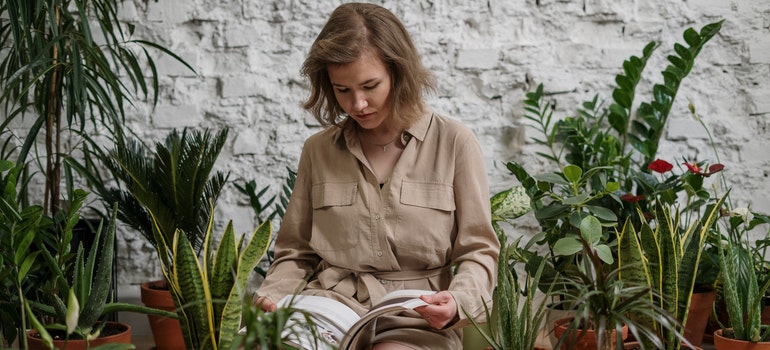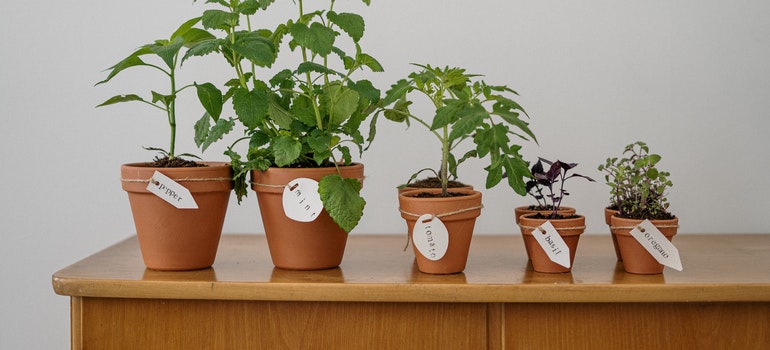How to pack plants for moving to Bergen County
As one of the finest moving companies NYC, we provide you with a seamless relocation experience!
GET A FREE QUOTE
Every part of a relocation to Bergen County needs to be approached with special attention. Some stuff is easier to do, some are a bit more complicated but everything needs to be planed out and you should inform yourself before you begin with the process. For example, you should research which packing supplies to use before you begin the packing process. Leave nothing to chance. If you aren’t sure whether to hire movers or just rent a truck and do it with your friends, think it all through. However, certain actions need special attention. For example, before you decide to pack plants for moving to Bergen County, you should really know what you’re doing.
One wrong move and you can damage them or even kill them by mishandling your plants. Just like pottery, paintings, and china, plants can also be very valuable. Maybe it’s due to the rarity of a species or just their emotional value but plants play an important role in our lives and we should treat them as such. Let us give you a few tips on how to pack plants for moving to Bergen County in a way they stay safe and unharmed.

Pack plants for moving to Bergen County three weeks before
This part consists of a few phases from three weeks before the move until the morning of the relocation.
What to do three weeks before?
Re-pot your plants before your Bergen County movers come to relocate you. Move them from your clay or metal pots into classic plastic vases and pots of roughly the same size. Do your best to get shatterproof pots, it’s not hard and it might prove useful in the long run.
What to do two weeks before the relocation?
Cut off branches, limbs, dead leaves, and flowers from your bigger plants. Try to pinch back early growth using the thumb and forefinger. You can remove all the unnecessary parts using gardening tools or some scissors if you have no other tool. Do it before relocating with some of the best moving companies NJ has to offer. Pruning, as the process is called, will reduce the size of your plants and thus make them compact for carrying and quick transport. That process will also make your plants bushy, rich, attractive, and healthy. You will see the results after your relocation. Don’t do it to ferns and succulents though. Those types of plants are much more sensitive and pruning won’t have the same effect on them.
What to do one week before the moving date?
Inspect your plants for pests and parasites. If you choose to apply any kind of chemicals like insecticides, be cautious and try to follow the directions you find on the label. Try to dispose of all the pesticides you have in the house before the moving day. They are highly toxic and a lot of movers won’t allow them.

What to do 48 hours before the move?
Two days before don’t require too much attention. Just water the plants as you would usually do. Make sure not to overwater. That is the only problem you might encounter if you aren’t careful. Excessive amounts of liquid can make your plants freeze if the temperatures are cold or stimulate fungus growth if the temperatures are too warm.
Steps to take on the moving day
It’s up to you whether you will pack the plants on the morning of your move or the night before. Here are a few steps on how to pack plants for moving to Bergen County:
- Wrapping is a must. Wrap all your big plants with a sheet you don’t need or an old towel to make sure that the branches don’t get damaged or break during your relocation with storage Bergen County.
- Pay a lot of attention to the position. Make sure you’ve packed each pot in the way it fits well at the bottom of the box. It’s up to you if you want to use classic moving boxes or dish packs, for example.
- Tuck in some paper. If you find it necessary, tuck some paper inside the box. Put it all around the base of the pot. It’s important to fixate the pot in place so it doesn’t move around. Pierce holes in the box. With air holes in the boxes, the plants will have enough air not to dry or die due to suffocation.
- Label everything by its name. Write names of the plants on them so you can be sure which ones are more fragile than others. Also, make sure you write which side of the box is top and mark the sides. Doing that can help a lot in avoiding loading them on the side and ruining them by mistake.
- Control the conditions inside the truck or car. Make sure the temperature inside is always at an optimal level that is comfortable for plants. Too cold and too hot can damage plants.

What to do once you’re home
Once the relocation is over and you’re in the new house or apartment, make sure to get the plants in the same state they were in at the old place. Here is how to do it:
- First things first, unpack. Do that as soon as you can. Take your plants out of the box through the bottom of the box to avoid any damage to the branches. If you are in a hurry, make sure that you understand how to quickly unpack your boxes without damaging the plants.
- Properly place them. Place back the plants into the same pots they were in. If you don’t have the same ones, get ones that are the same size as the old pots.
- Let the plants stabilize. Try not to move plants around the house too much until they stabilize in the new environment.
- Allow them to heal. There is something called transplant shock. It happens to plants after a move. Give the plants a bit of time to heal and recover. If you follow the steps well, you are ready to pack plants for moving to Bergen County.
With enough planning and a lot of care, plants can make a successful relocation without damage. Just like their owner, they’ll prosper and flourish in their new environment.
